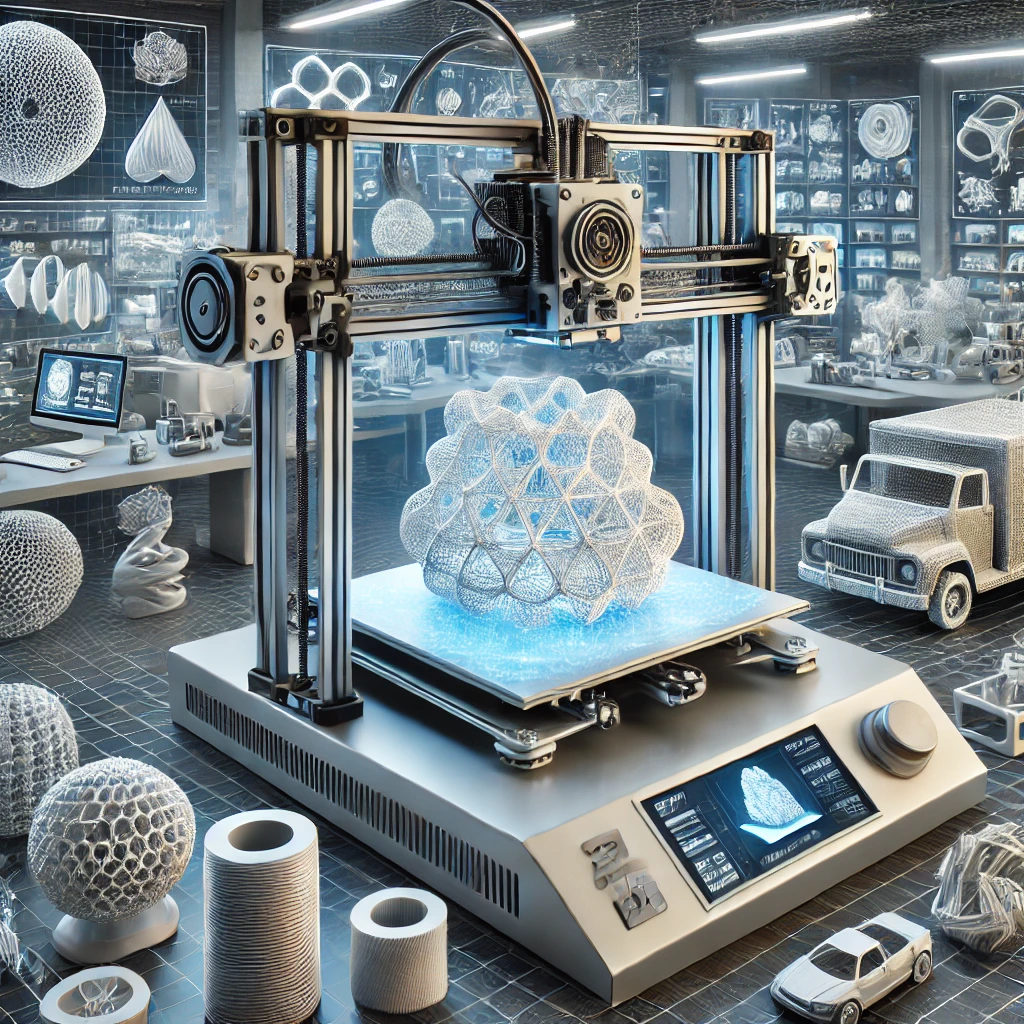3D printing is a technology that reproduces objects using a variety of materials and methods based on data representing the surface of an object in three-dimensional space, and is revolutionizing many fields, including manufacturing, medicine, and art.
3D printing is a technology that actually reproduces the geometry of a targeted three-dimensional object, and the printer that realizes 3D printing is called a 3D printer. 3D printing technology has evolved rapidly in recent years, revolutionizing manufacturing and many other fields. Initially used for simple prototyping, 3D printing technology is now being used in a variety of industries, including advanced manufacturing, healthcare, art, and more. 3D printing requires data that represents the surface of an object in three-dimensional space. To get this data, you essentially need a computer and 3D software to create a model. Of course, you can also use 3D scanners to obtain data of real-world objects, which can be used as data for 3D printing.

The data obtained using 3D software represents the surface of an object, usually as a polygon mesh. Polygon meshes represent faces in the form of polygons connected to each other, often using triangles or squares as basic shapes. The data is created by representing the vertices of the polygons in this polygon mesh as spatial coordinates in the three directions X, Y, and Z. The coordinates are assigned to the polygon mesh. As the number of vertices to be coordinated increases, the amount of data increases. The polygon mesh data must be converted back to data that represents the object as a thin layer of stacks. The coordinates of the polygon mesh are used to create the data for each layer in order from bottom to top.
Once the data is created, it is sent to a 3D printer to produce the resulting object, which can be printed in a number of ways depending on what material and how the object is made. Some 3D printers create layers using photocurable resin, which is a liquid that hardens under light, while others use solid materials and melt the material with a laser like sculpting. There are many different types of 3D printers being developed, each tailored to specific applications and materials. For example, metal 3D printing is ideal for aerospace and automotive parts manufacturing, while plastic 3D printing is often used to create consumer goods and medical devices.
Of these, 3D printers that use photocurable resins are liquid, like inkjet printers. The liquid photocurable resin is applied to a plate inside the printer in a fine layer, about one-tenth the thickness of a human hair, to create the layers of an object. The liquid material is jetted out of the printer head and is immediately hardened by ultraviolet lamps on either side of the head. On top of this hardened layer, another jet of material is sprayed to build up another layer. The process is extremely precise and requires a high degree of technical coordination.
In recent years, sculptors have also used 3D printing to preview the shape of their works. Industries can use it to create products designed in software that closely resemble the finished product. Computerized communication networks also make it possible to exchange opinions on products by sending samples in a very short time, regardless of distance. These technologies are especially helpful in saving time and money, and can greatly increase the efficiency of the prototyping process. In particular, 3D printing makes it easy to create complex designs and geometries that are difficult to realize with traditional manufacturing methods.
There are a growing number of applications for 3D printing, ranging from manufacturing everyday items to automotive, aerospace, art, and medical applications. For example, in the medical field, 3D printing is being used to create customized prostheses and implants. These customized medical devices can be made to fit a patient’s individual anatomy to maximize the effectiveness of treatment. In the automotive industry, lightweight parts are being rapidly manufactured to improve fuel efficiency and performance of vehicles. Education has also embraced 3D printing, allowing students to design and print their own models, fostering creativity and problem-solving skills.
In the future, 3D printing technology is expected to become even more advanced, allowing people to create simple parts and everyday items at home. This technological advancement will significantly change the paradigm of manufacturing and create a new form of consumerism where consumers can instantly create and use the products they want. Furthermore, 3D printing can be positioned as a sustainable manufacturing technology. It can help protect the environment by reducing a lot of the waste and energy consumption of traditional manufacturing. The endless possibilities of 3D printing technology will revolutionize industries and our daily lives in the future.
As you can see, 3D printing has become more than just a manufacturing technology, but an important technology that has a profound impact on various industries and our lives. We are excited to see how 3D printing technology will evolve in the future and what new opportunities it will bring us. With the advancement of technology, we will be able to change the world in more creative and efficient ways.
 I’m a blog writer. I want to write articles that touch people’s hearts. I love Coca-Cola, coffee, reading and traveling. I hope you find happiness through my writing.
I’m a blog writer. I want to write articles that touch people’s hearts. I love Coca-Cola, coffee, reading and traveling. I hope you find happiness through my writing.